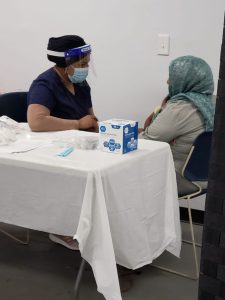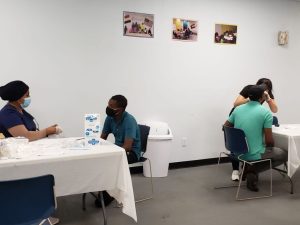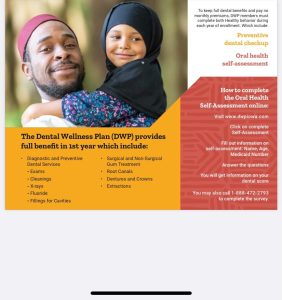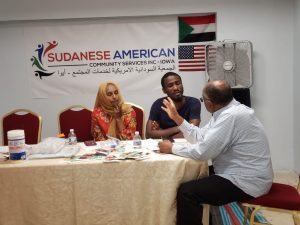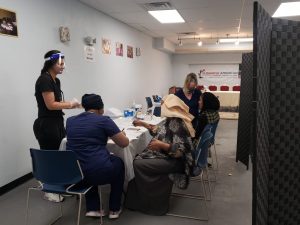THE IOWA IMMIGRANT ORAL HEALTH PROJECT
This project aimed to increase the uptake of preventive oral health services among African refugees in Iowa City. Studies showed that immigrants with a moderate network size were more aware of the importance of dental care and were more likely to use dental services. Conversely, a poor social network (a network with few individuals with knowledge of dental health) was inversely related to negative oral health outcomes (Nahouraii, 2008). The proposed theory of change was that by increasing the knowledge and skills of African refugees/immigrants to fulfill the ‘Healthy Behaviors’ requirement of the DWP, more refugees would qualify for the full dental benefits, thereby increasing the utilization of preventive oral health services. This intervention used the Social Cognitive Theory (SCT) to create a social network that would raise awareness and drive the usage of oral health services. Social Cognitive Theory (SCT) described a dynamic, ongoing process in which personal factors, environmental factors, and human behavior influenced each other. According to SCT, three main factors affected the likelihood that a person would change health behavior: 1. self-efficacy, 2. goals, and 3. outcome expectancies. If individuals had a sense of personal agency or self-efficacy, they could change behaviors even when faced with obstacles. If they did not feel that they could exercise control over their health behavior, they were not motivated to act or to persist through challenges. The goal of the Oral Health Immigrant “OralHimmiG” project was to increase the utilization of preventive dental services among African refugees aged 1-65 living in Iowa City, Iowa. The project used peer-to-peer education and campaigns to improve the uptake of preventive dental services among the African refugee population. The project’s target population was African refugees aged 19-65 living in Iowa City. We aimed to generate demand for oral health services using health educational campaigns and interpersonal communication through social networks. The project provided two training sessions to five peer educators (oral peer educators). Session 1 focused on providing an overview of the OralHimmiG project, including the purpose, roles, and responsibilities of the peer educators. Session 2 included information about the importance of preventive oral health screening. Language-appropriate information, education, and communication materials were also developed for peer educators to facilitate discussions during their sessions. Peer educators were tasked with communicating oral health messages to ten individuals each month, with the goal of reaching a total of 50 per month and 300 by the end of the six-month project. These messages were further reinforced through monthly mailings, and a compilation of Medicaid Dental Service providers in Iowa City was compiled for reference.

